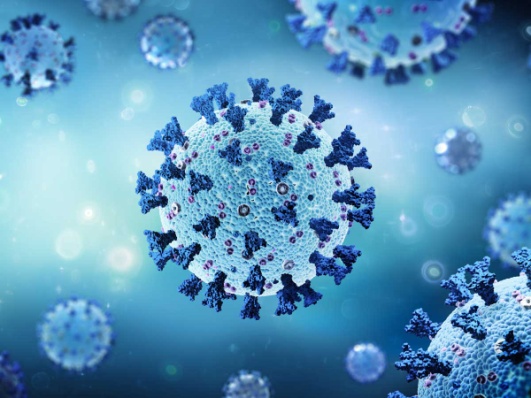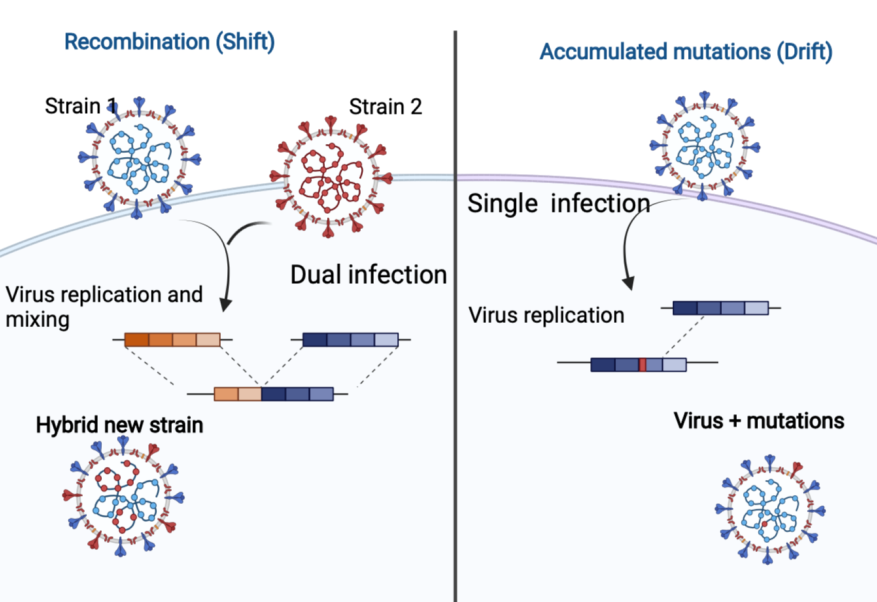Description

Copyright infringement not intended.
Context
- The Union Health Ministry refuted claims that India has reported its first case of the COVID-19 variant, XE, in Mumbai.
- GISAID had confirmed the case in a suspected patient but INSACOG decided to go for another round of genomic sequencing at national laboratory for sure confirmation of XE variant.
About XE variant
- XE is known as a recombinant, meaning it is essentially a mixture of two different viruses or variants with characteristics of both. Specifically, XE is a mixture of the two Omicron variant sub-types BA.1 and BA.2.
- Recombination occurs when coinfecting viruses exchange genetic information, creating a novel virus.

Copyright infringement not intended
- Recombinants occur when a person is infected with two different viruses, such as variants of COVID, at the same time, causing the viruses to mix when they replicate.
- XE is among three recombinants to have been named by researchers recently, with the others being XD and XF.
- The latter two are mixtures of Omicron and Delta which do not appear to have spread as much as XE.
- XE and XF have been found in the U.K., while XD has been found in other countries in Europe.
- 3 new recombinants have been designated (see @PeacockFlu thread below)
- XD: Delta x BA.1 (mostly in France but also Denmark, Belgium. None in UK.)
- XE: BA.1 x BA.2 (UK only)
- XF: Delta x BA.1 (UK only)
- Omicron has been reported to be the dominant strain worldwide with 99.7 per cent of the fresh samples belonging to the variant, according to the WHO.
- (WHO) noted that XE may have a growth advantage of 10 percent over the currently dominant BA.2 Omicron sub-variant, meaning it could spread slightly faster.
- One concern about recombinants is that they could potentially (but not necessarily) combine features of two variants to make a mixture that is more dangerous than both of them individually.
GISAID
- GISAID stands for the Global Initiative on Sharing Avian Influenza Data.
- It is an international consortium of researchers helped to set it up as a non-profit foundation in 2008, to address researchers’ reluctance to share data on influenza strains.
- GISAID provides open access to genomic data of influenza viruses and the coronavirus responsible for the COVID-19 pandemic.
INSACOG
- INSACOG (Indian SARS-CoV-2 Consortium on Genomics or Indian SARS-CoV-2 Genetics Consortium is the forum set up under the Ministry of Health and Family Welfare by the Government of India in 2020, to study and monitor genome sequencing and virus variation of circulating strains of COVID-19 in India.
- INSACOG works as a consortium of 28 national laboratories for genome sequencing located in different parts of India.
Must Read:
https://www.iasgyan.in/daily-current-affairs/recombinant-variant-of-sars-cov-2
https://www.iasgyan.in/blogs/bengal-strain-all-about-mutation
https://www.iasgyan.in/daily-current-affairs/ihu-variant-of-covid-19
https://www.iasgyan.in/daily-current-affairs/mu-variant
https://www.hindustantimes.com/world-news/what-is-a-recombinant-variant-5-things-who-said-amid-fears-over-new-xe-strain-101648953284213.html
















